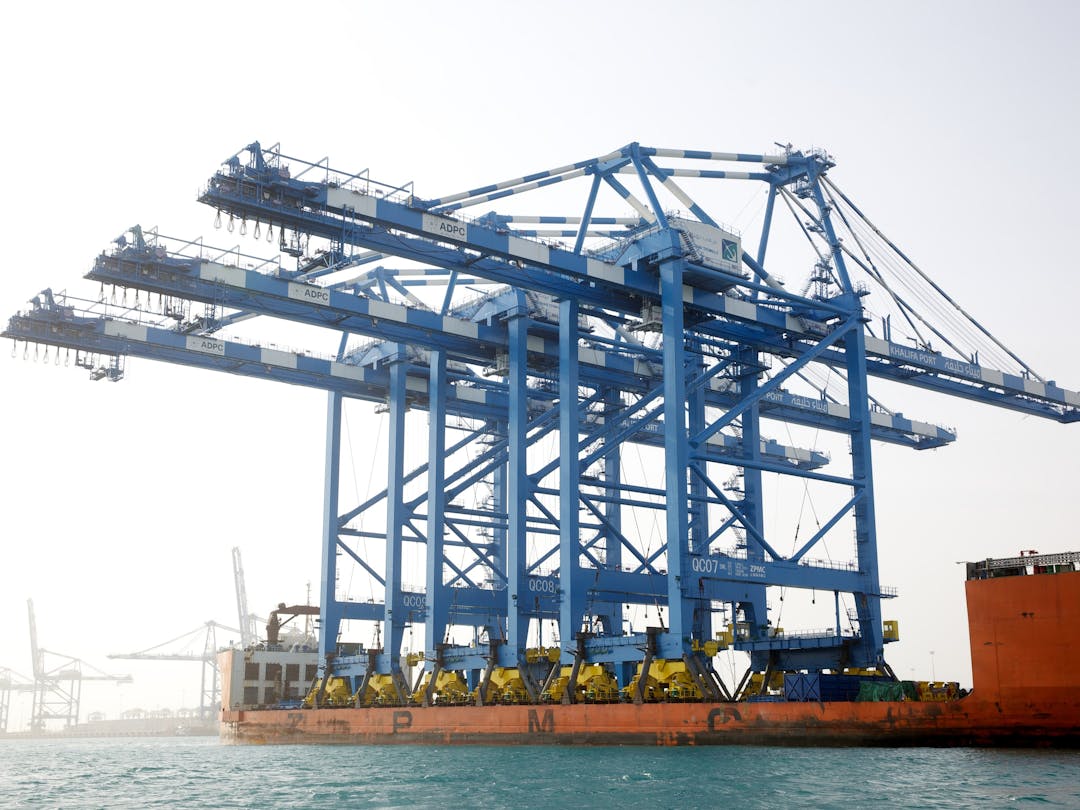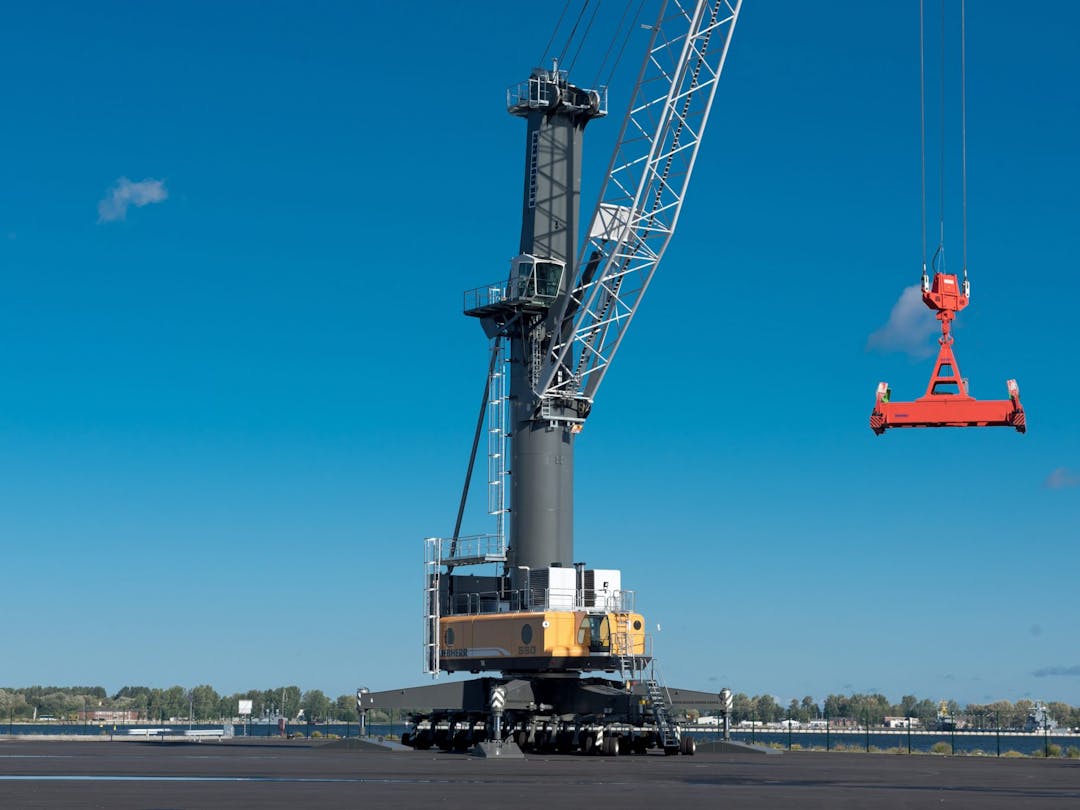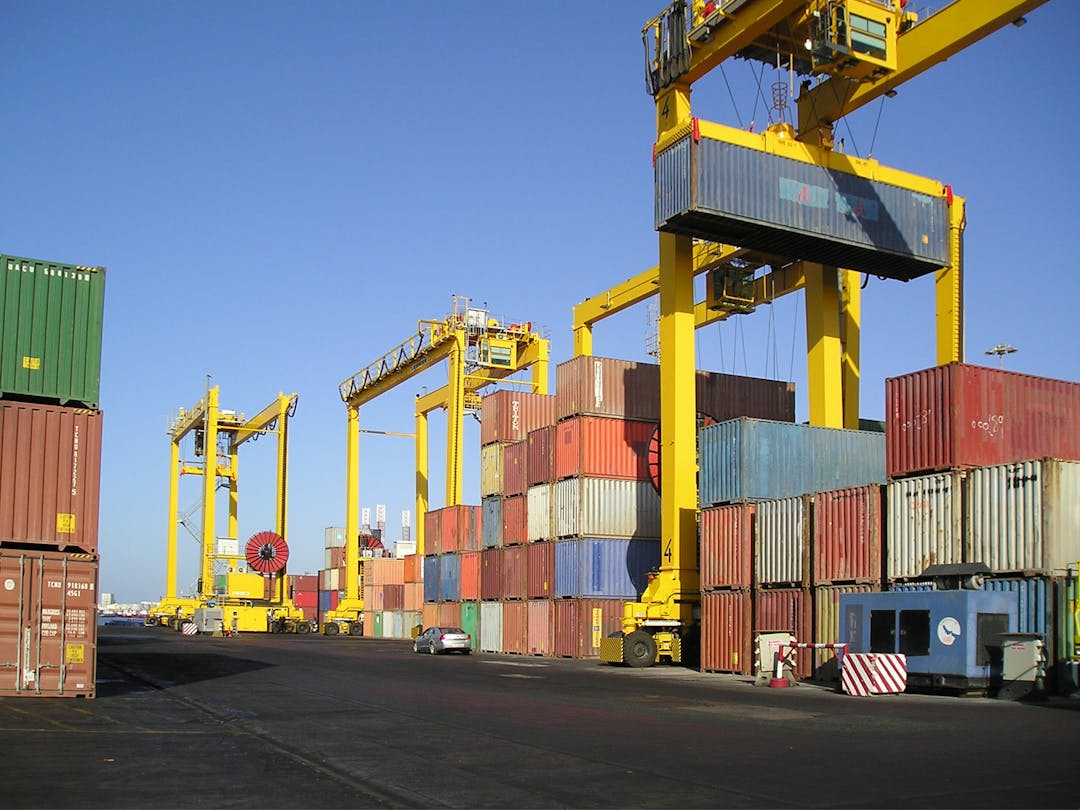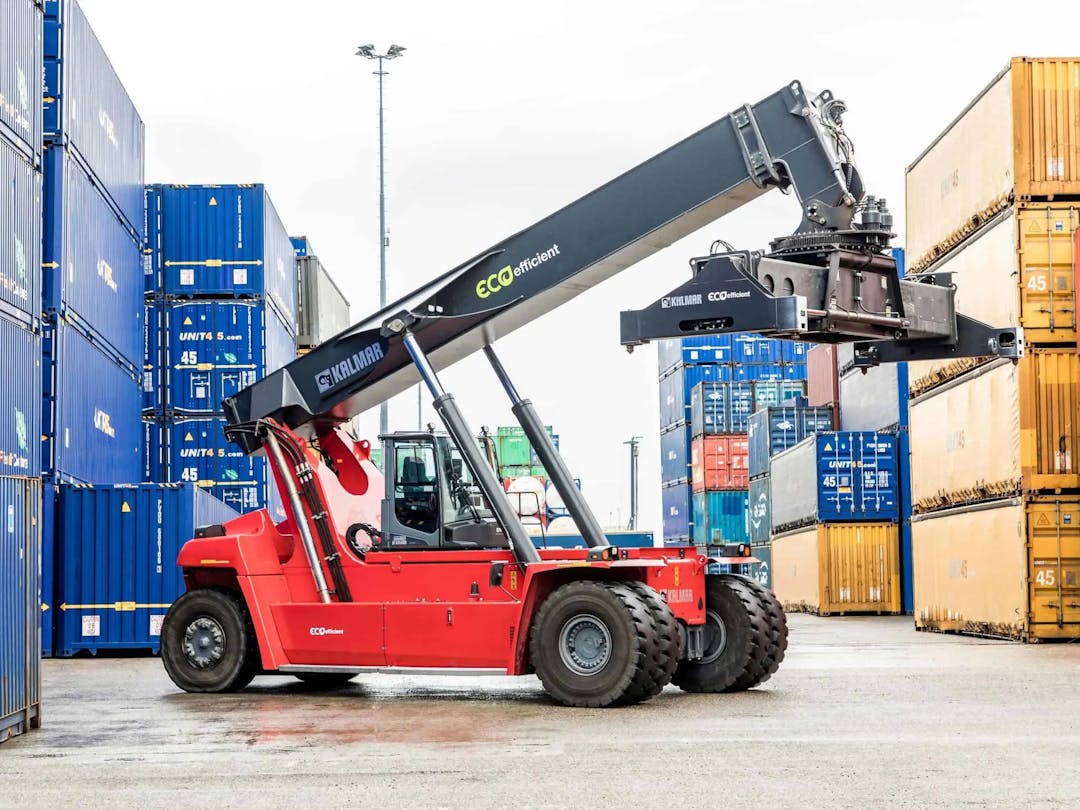What are the types of container handling equipment?
Container handling equipment for the efficient and damage-free transportation and storage of containers in ports. Learn more now.

Container handling equipment enables the efficient and damage-free transportation, storage, and delivery of containers to destinations worldwide. In this respect, it plays a fundamental role in international trade. In this blog, we will examine the types and types of container-handling equipment.
The adoption of standardized containers has revolutionized the transportation industry. Using standardized containers, the logistics process was streamlined, potential damages were reduced and goods were transported safely. This standardization facilitated faster international shipments and contributed significantly to expanding global markets.
At the heart of this system is a series of specialized machines. From cranes that load and unload huge cargo ships to forklifts that move containers around warehouses, each piece of equipment is designed for a specific task, ensuring efficiency and precision in the global supply chain.
Evolution of container handling equipment
An intermodal container, often called a shipping container or ISO Container, is a large standardized container designed and built for intermodal freight transport. These standardized containers have revolutionized the world of global trade and transportation.
The evolution of container handling tools is closely tied to global trade changes. Before standardized containers, cargo was shipped in labor-intensive ways like crates and drums, known as "bulk cargo." This changed with Malcolm McLean's mid-20th-century introduction of modern standardized containers. These uniform containers streamlined efficient cargo transport, enabling easy loading onto ships, trucks, and trains without repacking.
This new era of standardized containers increased the efficiency and speed of container transportation processes, leading to a remarkable transformation in the industry. The concept of 'containerization' became a game-changer, reducing the time and costs of handling and transporting goods. In response to the increase in container cargo volumes, this era led to the development of specialized equipment such as ship-to-shore cranes and stackers, further enhancing the capabilities and scale of containerized cargo operations.
The evolution of container handling tools is closely linked to the changing global trade landscape. Before the advent of standardized containers, cargo was typically shipped using various methods such as crates and drums. This was a labor-intensive process known as "bulk cargo." This all changed with the advent of the modern standardized container, introduced by entrepreneur Malcolm McLean in the mid-20th century. This new era increased the efficiency and speed of container transportation processes. In response to the increase in container cargo volumes, this era led to the development of equipment such as ship-to-shore cranes and stackers.
Container handling equipment
Container handling is a critical process that utilizes various specially designed tools and equipment. Most of this equipment sits on the corners of containers to perform the locking process. In addition, these vehicles are often equipped with equipment called spreaders and twist locks. Tools required for container handling in ports and terminal areas:
- Ship-to-shore Cranes
- Mobile Harbor Cranes
- Rubber Wheel Gantry Cranes
- Rail Cranes
- Stacking vehicles
- Tow trucks
Ship-to-shore cranes (STS):
Quay cranes are generally used for loading and unloading containers on and off ships. These cranes, also known as ship-to-shore cranes, are large structures mounted on shipping container ports and can quickly pick up and drop containers from ships. They can move on a rail system, which allows them to move quickly along the quayside. This feature offers excellent flexibility when loading and unloading ships.

Mobile harbor cranes (MHC):
Mobile cranes, as the name suggests, are cranes with mobility. While these cranes are used for loading and unloading containers on ships, they are also ideal for handling heavy loads. They are used for both container and bulk cargo handling. They can quickly move around the site, making them ideal for variable loading. Mobile cranes' availability and flexibility can increase port operations' efficiency.

Rubber-tyred gantry cranes (RTG):
Necessary for container terminals, these cranes provide maneuverability within container yards by moving on rubber wheels. They optimize storage space by facilitating vertical stacking of containers. RTGs effectively organize containers in shipping container yards, providing quick access and facilitating the transportation process.

Rail-mounted gantry cranes(RMG):
Designed for efficient stack handling, rail-mounted gantry cranes operate on fixed rails. As ports seek to increase efficiency, there has been a shift from flexible rubber-tyred gantry cranes to these rail-mounted systems, especially in high-volume ports.
Stackers (SC):
Container stacking vehicles are used to stack containers on top of each other. They can be of the spreader type, which grips the container from the top, or the blade type, which can handle the container using holes in the bottom. Stackers are ideal for transporting and storing containers at heights. They are generally used for stacking, retrieving, and loading containers onto trailers.

Carriers :
Trailers are vehicles used to transport containers from one place to another. They provide fast and efficient transportation of containers from ship to land, land to ship, or between different locations in the field. Thanks to their specially designed trailers, they can transport containers safely.
Experience reliable FCL and LCL container transportation with Hubtic!
Step into the new era of maritime, road, and intermodal transportation. With Hubtic's services, get your freight quotes in minutes, track your shipment along the way, and share a tracking link with your customers to keep them updated. Access all your transportation documents anytime, anywhere. If you have any questions during your transportation process, our expert support team is available 24/7 to help you.

Gain new insights on Hubtic and logistics.